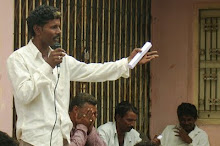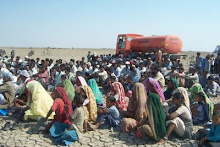The
Diplomat: National: Friday, November 25, 2016.
Situated
about 130 km from Ahmedabad, the capital of the Indian state of Gujarat, lie
the edges of the Rann of Kutch, just 10 km from the Arabian Sea. This is the
land of the Agariyas, who have lived here for centuries, knowing just one means
of livelihood salt farming. Working day in day out under a fierce sun from
October to June, they grow salt in square-shaped salt pans, harvesting 75
percent of India’s total salt produce.
During the
monsoon months, the Rann of Kutch becomes submerged in sea water. As the water
begins to recede in October, the Agariyas move in and begin a herculean
process. They dig wells to pump out the briny groundwater and fill the
square-shaped fields, then rely on the natural evaporation process to leave the
white crystals. In winter, the harvest season begins in the salt fields, which
are now silvery white with raw salt. Braving a relentless 40 degrees during the
day, which often dips to 4 degrees in the night, the Agariyas live for six or
seven months in the shacks beside their salt flats. Children begin working in
the salt pans from the age of 10.
Production
averages 12-15 tons every 15 days from each of the salt pans, and is sent to
salt companies and chemical factories across the country. The Agariyas earn a
paltry sum of Rs. 60 ($0.90) per ton. The market price of industrial salt is
Rs. 4000 per ton while domestic salt sells for Rs. 5500 per ton.
The low
incomes and lack of education facilities in the barren desert of the Rann offer
few chances for the children of saltpan workers to escape a cycle of poverty
and poor health. The salt workers remain generationally indebted to the salt
merchants.
And the price
of working for years in the harsh conditions is very high skin lesions,
severe eye problems due to intense reflections off the white surfaces, and
tuberculosis. A salt worker of Kutch seldom lives beyond 60. When they die,
their abnormally thin legs, stiff with years of exposure to highly saturated
salt, do not burn in the funeral pyre. Rather, the legs are collected by their
relatives and are buried separately in a small grave with salt so that they can
decompose naturally.

















.jpg)
.jpg)
.jpg)
.jpg)













No comments:
Post a Comment